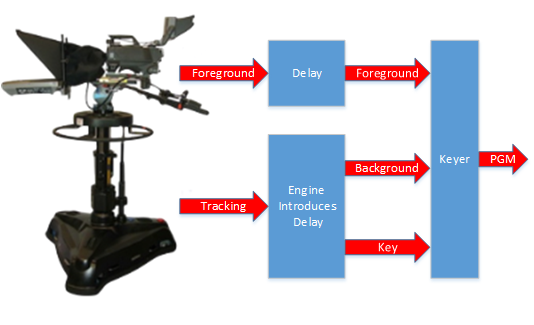Video Delay

It is assumed that the camera and the tracking system are connected to the same sync signal. When the camera records an image, the tracking system acquires the cameras position, does some calculations and then sends this data to the Tracking Hub, which one field later sends this tracking information to the Viz Engine. Unfortunately, the Viz Engine needs time to first render the image and additional time to output this image through the video card to its output. Normally, this process needs about 2 or 3 frames, depending on the video hardware used.
If we route the image from the camera directly to the keyer, the video will be presented before the rendered image from the Viz Engine. Therefore, delaying the video for a specific time is required in order to achieve a close match between the real image (i.e. the foreground in the virtual set) and the rendered image (i.e. the background in the virtual set). To apply this video delay it is (or was) required to introduce a delay line, which delays the video for a specific amount of frames.
Note: In interlaced modes it can not be delayed for fields. Video delays can only be applied on a frame base.
Modern Keyers, such as the Ultimatte 11 or the Saphire 3 have built in delay lines. An extra delay line must be installed when using older hardware.